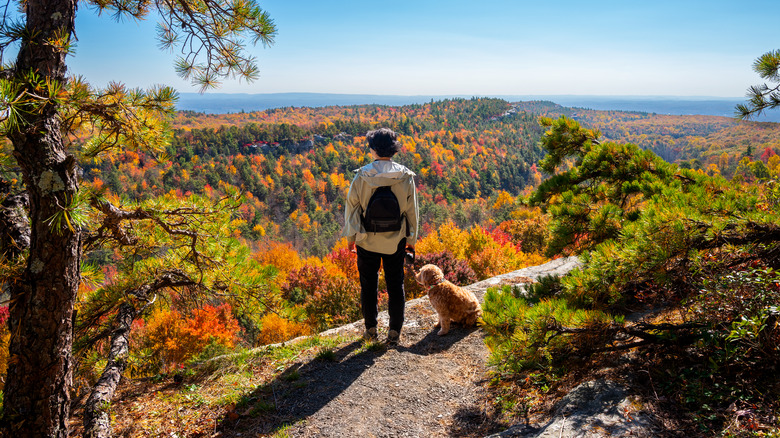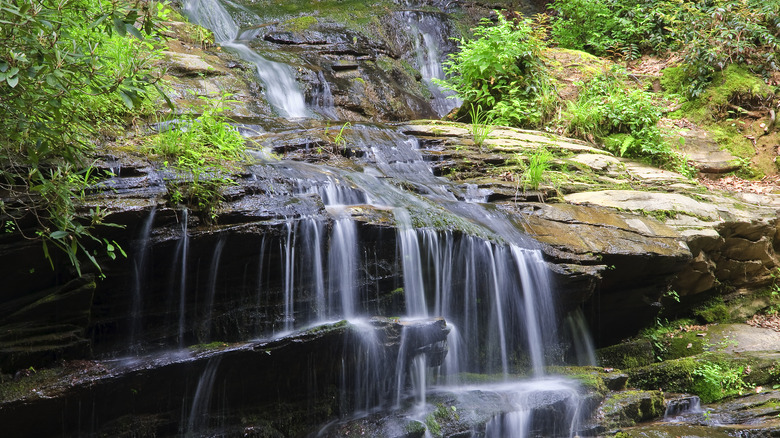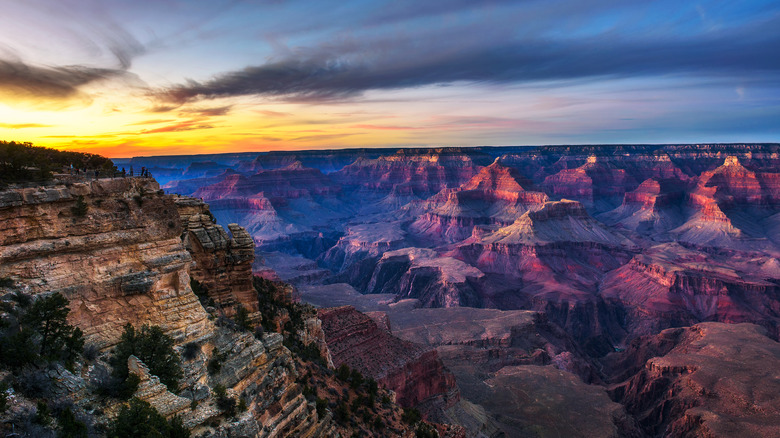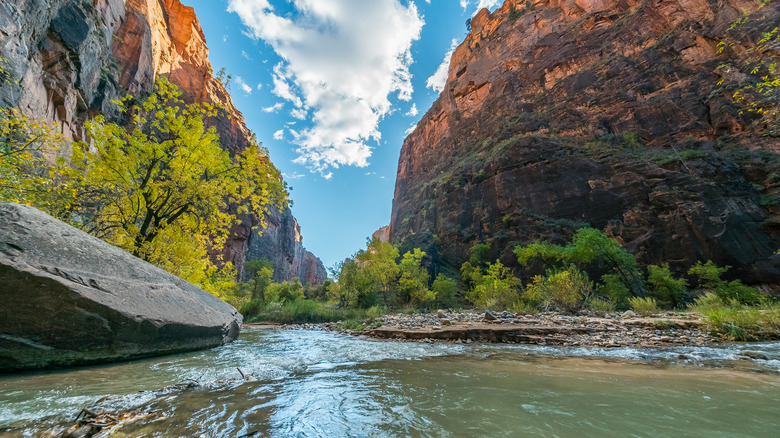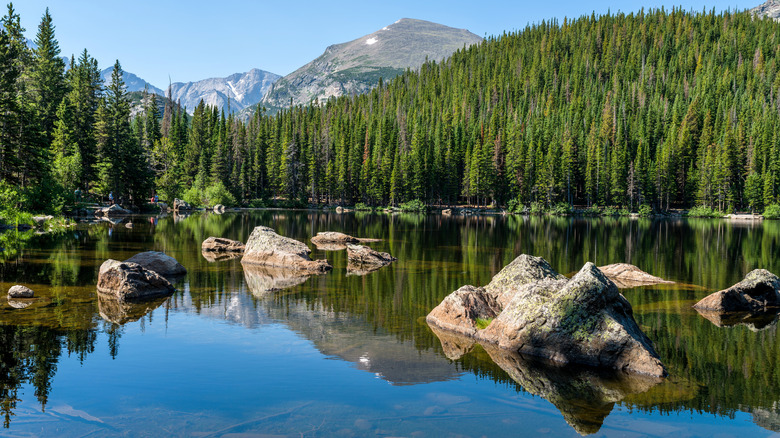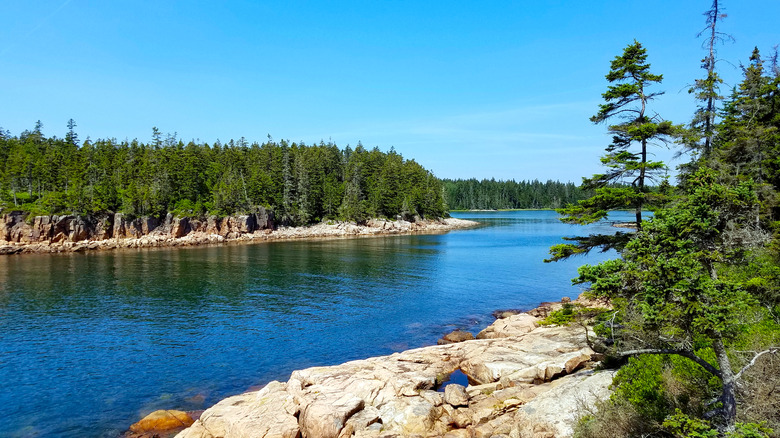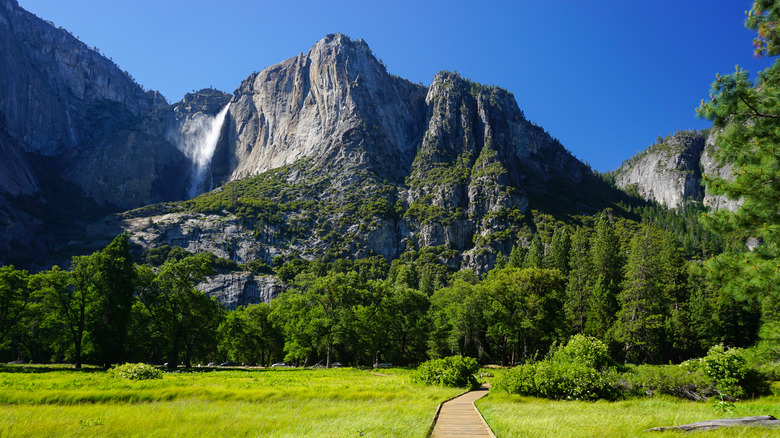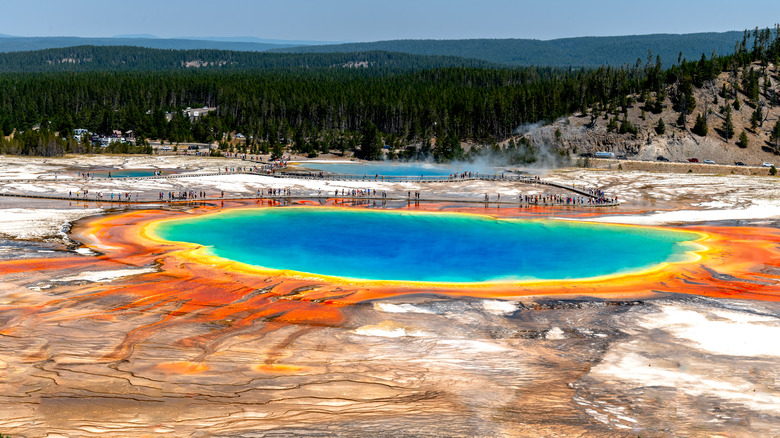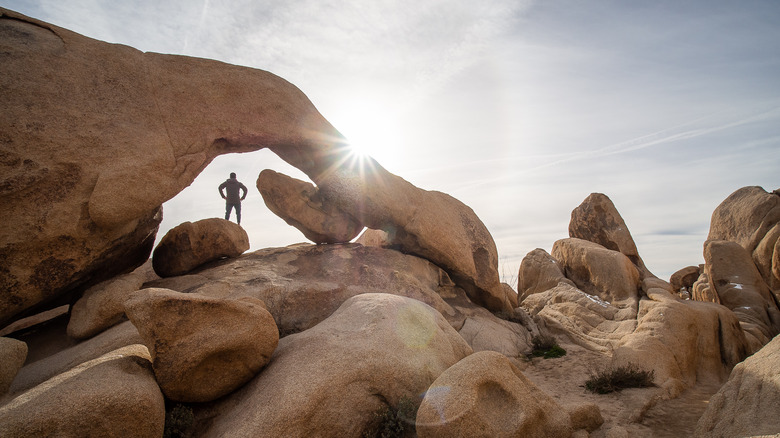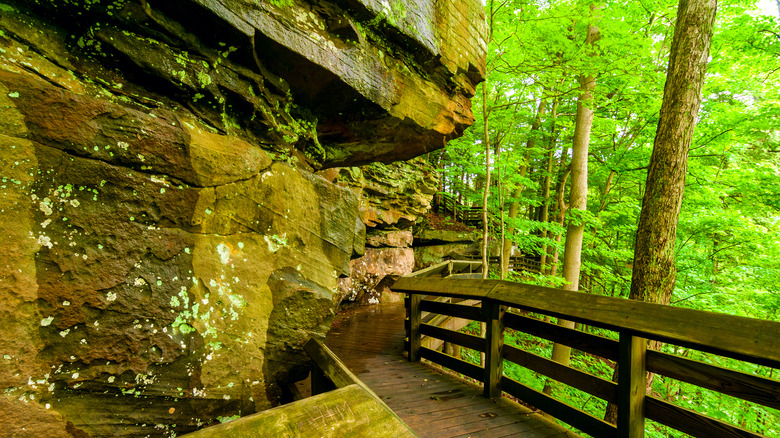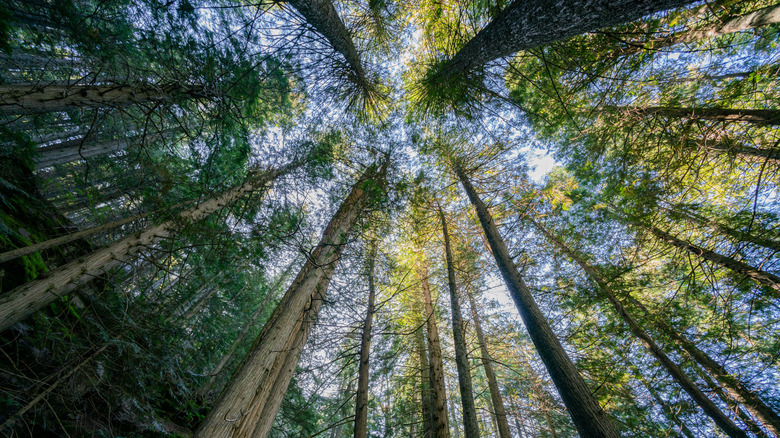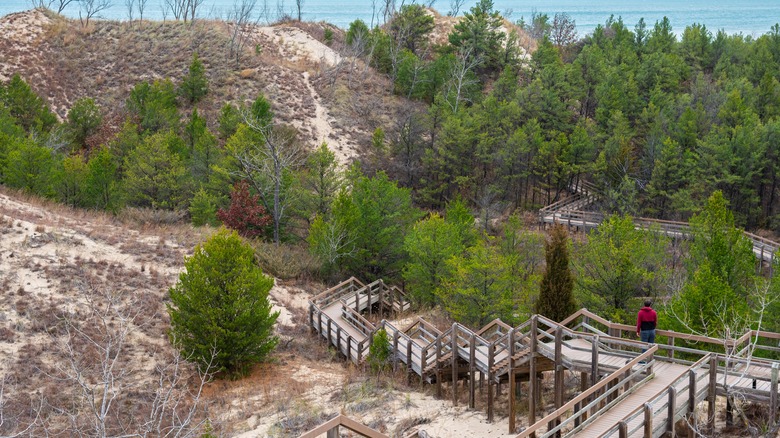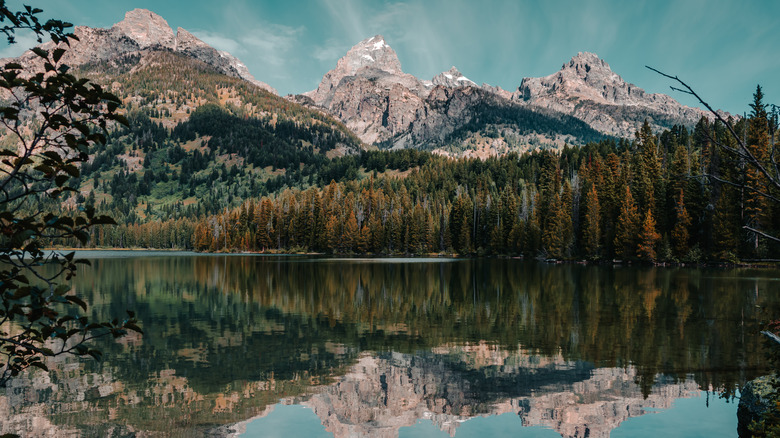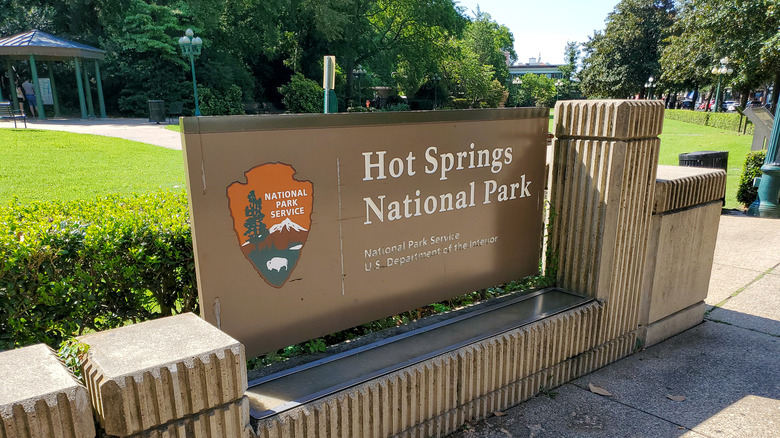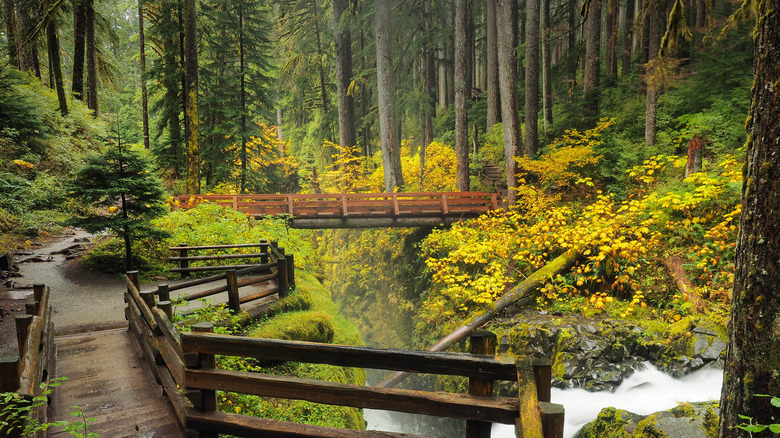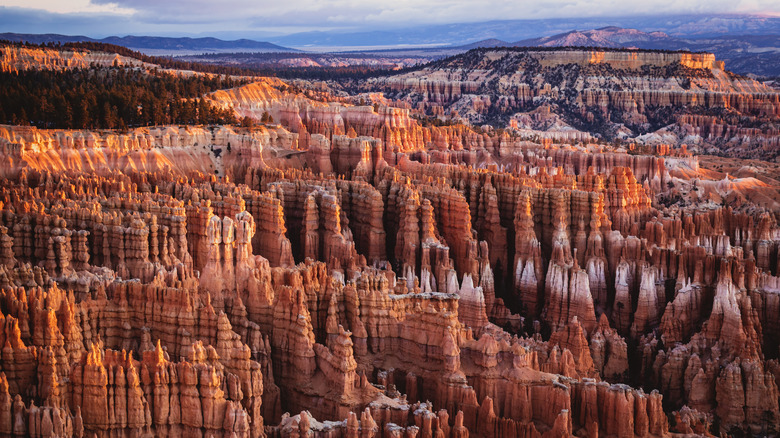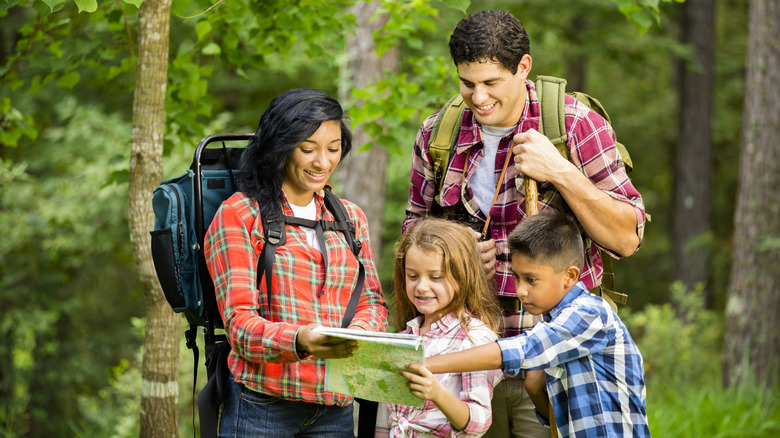15 Scenic Beginner Hiking Trails In America's National Parks
Picture this: You're surrounded by the breathtaking landscapes of America's national parks, where every turn offers a new vista more stunning than the last. The good news? You don't need to be a seasoned trailblazer to enjoy these natural wonders! Our national parks aren't just for the rugged — they're a treasure trove of beginner-friendly trails just waiting for you to lace up your hiking boots and explore.
Before you set off, remember that preparation is key. Even if you're just planning a leisurely stroll, make sure you have all the gear you need for a day at a national park. This includes water — and lots of it. Think you've packed enough? Add another bottle just to be safe. Also, pack your patience. These parks are crowd-pleasers for a reason, and sometimes that means they're, well, crowded. To ensure your visit is as smooth as a well-worn hiking path, plan ahead — some parks require advanced reservations. Have a plan B for those times when the parking lot looks like it's hosting a car convention. If possible, consider ways to avoid crowds at national parks, such as being an early-bird adventurer.
Now, the main event! We've handpicked 15 beginner-friendly trails from America's top 15 most popular national parks. Most of these trails are explicitly described by the National Park Service (NPS) as "easy." They're all less than five miles with minimal elevation gain. For the curious hikers, we've got the details on our trail selection process at the end of this article.
Deep Creek Trail (Great Smoky Mountains National Park, North Carolina)
Great Smoky Mountains National Park is among the best national parks in the Southern United States. Along the border of Tennessee and North Carolina, the park also holds the title of the most visited National Park in the U.S. It's easy to see why, with the park's lush forests, babbling creeks, and misty mountains with cascading waterfalls. Explore this beautiful setting with hiking opportunities available all year round. Note that bears live in the area, and the park allows you to carry bear spray.
If you're looking to dip your toes into the hiking scene, Deep Creek Trail near Bryson City, North Carolina is an excellent starting point. This beginner-friendly trail is a relatively flat, 1.6-mile roundtrip journey on an in-and-out hike. Along the way, you're treated to not one but two stunning waterfalls: Tom Branch Falls and Indian Creek Falls. Set aside about one to two hours for this hike.
Feeling more adventurous? Turn your hike into a loop by adding Deep Creek Horse Trail to your route. This will take you near a third waterfall, Juney Whank Falls. This extended version is a 2.4-mile trek and will require you to navigate a few steep trail sections. Pets are not allowed on both trails.
Rim Trail (Grand Canyon National Park, Arizona)
The NPS warns that "There are no easy trails into or out of the Grand Canyon," but there are plenty of beginner-friendly hikes with grand views of the canyon. Open year-round on the South Rim, the Rim Trail totals over 12 miles, but don't let that scare you off. You can choose your own adventure here — a short stroll or a long trek. The trail is mostly flat, and most sections are paved, making it a walk in the (national) park! The best time to visit is in early spring or fall, as the Arizona sun can be scorching in the summer.
A great option on the Rim Trail is the Trail of Time, an interpretive trail with exhibits and some of the most spectacular views of the Grand Canyon. Starting at the Yavapai Geology Museum (which, by the way, is perched right on the canyon's edge with panoramic windows that'll make your jaw drop), the Trail of Time travels along a paved, easy-to-navigate path that takes you on a 1.5-mile journey through two billion years of Grand Canyon history.
For another option on the Rim Trail, wander from the Yavapai Geology Museum to Mather Point, a 1.4-mile round trip. Mather Point isn't just a popular overlook — it's the golden ticket to some of the most stunning sunrises and sunsets you'll ever see. Imagine the canyon's expansive views and dramatic rock formations illuminated in the magical glow of twilight.
Riverside Walk (Zion National Park near Springdale, Utah)
With deep canyons, soaring rock formations, and an array of plant and animal life, there are many reasons to visit Zion National Park. For an ideal beginner trail in the park, consider the Riverside Walk near Springdale, Utah. As you meander along the paved path, the Virgin River will be your companion, gurgling alongside as you're flanked by majestic rock walls. There are a few slopes, but with a total elevation change of less than 200 feet, the NPS describes this as an easy trail. Out and back, the journey is about two miles roundtrip.
At the trail's end, you'll find steps leading down to the river. Here, things get a bit more rugged with an unpaved, rocky area. This is the start of Zion's famed hike in The Narrows, a challenging route requiring hikers to wade or sometimes swim through the Virgin River. But you don't have to go swimming to capture a memorable photo of the awe-inspiring entrance to The Narrows.
The Riverside Walk is open all year, though the sweet spot for visiting is from March through October. Winter can transform this trail into an icy hazard — sometimes, the park closes sections during unsafe conditions.
Bear Lake Nature Trail (Rocky Mountain National Park, Colorado)
Near Estes Park, Colorado, Rocky Mountain National Park is among the must-visit national parks in the Western United States. The sky's not the limit here, but it sure feels close! With over 60 mountain peaks soaring over 12,000 feet, the park is one of the highest national parks in the United States.
The Bear Lake Nature Trail is a flat, short, and sweet half-mile loop around a subalpine lake. You could zip around it in 15 minutes, but why rush? Peruse the interpretive signs and become one with the scenery. Extend this hike by adding the Emerald Lake Trail. Travel through aspen groves and ponderosa pines on the way to three lakes. You'll hit Nymph Lake in about half a mile— a perfect warm-up. Another half-mile, and voilà, you're at Dream Lake. Up to this point, the NPS still describes this as an easy trail.
Bear Lake is a year-round destination, but it's usually not flip-flop-friendly. If it's not summer, bring microspikes for extra grip on snowy and icy paths. And true to its name, Bear Lake is in black bear territory. Carrying bear spray is permitted, but sightings are rare.
Ship Harbor Trail (Acadia National Park near Bass Harbor, Maine)
Acadia National Park is one of the best national parks on the East Coast. Located in Maine, it's a great park for indecisive people who can't decide whether to visit beaches, forests, or mountains. Acadia has them all!
For a great beginner hike, take the Ship Harbor Trail. The trail is mostly flat, covering 1.3 miles. You'll find interpretive signs along the trail and see a variety of habitats, from sea views to spruce woods. The trail is a great choice for bird lovers. Look for common loons, great blue herons, ospreys, and eagles, among others. Within the forest, look and listen for a variety of songbirds. Back to the shore, if you time your visit with low tide, you'll get to explore mudflats, tidepools, and a quiet cove. Access to these features will require traversing uneven and rocky terrain.
The NPS suggests spring, summer, and fall as the prime time to visit Ship Harbor Trail. During these seasons, the park is fully awake and buzzing with activity. Winter, on the other hand, turns Acadia into a quieter version of itself. Many of the park's roads, facilities, and attractions take a seasonal snooze. But if you're well-prepared and willing to plan for a sparser version of the park, the trail remains open and offers a stunning contrast of snow and shore.
Lower Yosemite Fall Trail and Cook's Meadow Loop (Yosemite National Park, California)
Yosemite might be well known for the challenges found on the iconic El Capitan and mighty Half Dome. But there's much more to the park than death-defying climbs and strenuous day hikes. Yosemite National Park is surprisingly beginner-hiker friendly.
Ready to feast your eyes on some of Yosemite's most stunning vistas without breaking a sweat? Make a beeline for the Lower Yosemite Fall Trailhead. Here, you can embark on the Lower Yosemite Fall Trail, a nearly flat one-mile loop that's easy on the legs and eyes. This trail is a scenic superstar, showcasing both Lower and Upper Yosemite Falls — one of the tallest waterfalls on the planet! Also starting from Yosemite Fall Trailhead, Cook's Meadow Loop is a flat, one-mile loop with more great views of the falls.
Both Lower Yosemite Fall Trail and Cook's Meadow Loop are open year-round. But if you want to see and hear Yosemite Falls in its full, roaring glory, aim for a spring or early summer visit. The waterfalls can be so generous during peak flow in May that you might get sprayed while on the footbridge of the Lower Yosemite Fall Trail. Winter offers a unique experience, with fewer crowds, frosty waterfalls, and a park decorated in snow — but be careful even on these beginner-friendly trails since you may encounter slippery ice. Note that Yosemite is home to black bears, but bear spray is not allowed in the park.
Grand Prismatic Overlook Trail (Yellowstone National Park)
Known as the world's first national park, Yellowstone has a lot to offer — active geysers, geologic wonders, intriguing wildlife, and abundant hiking opportunities with over 900 miles of trails. One must-do beginner-friendly hike takes you to the Grand Prismatic Overlook Trail. Access this trail from the Fairy Falls trail at the Fairy Falls Trailhead. It's about a 1.5-mile roundtrip hike to the overlook, with a gradual ascent. The overlook provides a stunning view of the colorful Grand Prismatic Spring, Yellowstone's largest hot spring and the third largest in the world.
Summer and fall are your best bets for visiting the Grand Prismatic Overlook Trail. It's open (and beautiful) in winter, but it might play hard to get due to seasonal road closures. From mid-March through late May, the trail closes because it's within one of Yellowstone's Bear Management Areas, designed to limit potential bear-human encounters. Yellowstone is home to grizzly bears, and the park recommends that hikers carry bear spray.
Arch Rock Trail (Joshua Tree National Park, California)
You'll find a lot more than just iconic, twisty Joshua trees at Joshua Tree National Park. The park's rock and boulder formations look other-worldly. As an International Dark Sky Park, Joshua Tree is also one of the best camping spots in the U.S. for stargazing. And when the sun comes up, you can explore the park on lots of short, flat, beginner-friendly trails. Make sure the Arch Rock Trail is on your list.
Starting from the Twin Tanks parking lot, Arch Rock Trail is a little less than 1.5 miles roundtrip. The trail will follow the shape of a lollipop. You'll start on a straight, sandy path. About .6 miles in, you'll hit a rocky loop. Pro tip: Hike the loop counterclockwise to spot Arch Rock more easily. Regardless of your direction, you'll enjoy informative displays about the area's geology and history.
This trail is open year-round, but keep in mind this is the desert. The summer heat isn't just uncomfortable — it's also dangerous. If you do brave this desert trail in the summer, the NPS recommends starting before 10 a.m. to beat the heat. Even short hikes can be intense when it feels like you're walking on the sun.
Brandywine Gorge Loop (Cuyahoga Valley National Park, Ohio)
Come explore one of the free-to-visit national parks in the U.S. Nestled between Cleveland and Akron, Cuyahoga Valley National Park lets you quickly trade urban attractions for native plants, curious wildlife, rolling hills, lush forests, winding rivers, and roaring waterfalls. And you can reach one of the best waterfalls on a beginner-friendly hike.
Starting from the Brandywine Falls Trailhead, the 1.5-mile Brandywine Gorge Loop gains a modest 160 feet in elevation — just enough to feel like you're accomplishing something without actually needing a pep talk. The trail meanders through a wooded ravine and takes you down to Brandywine Creek. This is an unpaved trail and occasionally rocky. A boardwalk wraps around a dramatic rock cliff and takes you to a viewing area of the 60-foot-tall Brandywine Falls, cascading into a lush gorge. There is also an optional offshoot from the main trail to a lower boardwalk that provides a closer view of the falls. Reaching this lower viewing deck requires a walk down about 80 steps.
Cuyahoga Valley National Park keeps its trail system open throughout the year. Each season offers something different to the Brandywine Gorge Loop. In addition to the roaring waterfall, spring greets you with wildflowers and seasonal vernal pools. Autumn paints the forest in vibrant fall colors. Winter transforms the falls into an icy spectacle, though it's worth noting that the trail and boardwalks can get a bit slippery and sometimes close when Jack Frost gets too enthusiastic.
Trail of the Cedars (Glacier National Park, Montana)
Glacier National Park makes the list of must-visit spots in Montana. The glacier-carved landscape showcases towering peaks, alpine lakes, and dense forests. Enjoy one of those forests on the Trail of the Cedars, which starts from the Avalanche Picnic Area near Lake McDonald. Less than a mile long, the trail is a level, wheelchair-friendly path along a well-maintained boardwalk. You'll stroll beneath towering western red cedar and western hemlock trees. Thanks to these trees, this trail is noted by the NPS to have "some of the shadiest parts of the park."
If you want to extend this hike, Trail of the Cedars connects to Avalanche Lake Trailhead. From here, the journey transforms from a leisurely stroll into a moderate hike. It's about five miles roundtrip on an out-and-back trail to Avalanche Lake. Wave goodbye to the boardwalks as you gain about 500 feet in elevation, navigating through the forest on uneven terrain. The payoff is worth it when you reach the stunning Avalanche Lake, surrounded on three sides by steep mountains and waterfalls in the distance.
Circle late May through September on your calendar— many of Glacier National Park's roads and services close during the long and snowy winter. And once the snow stops, it can be a two to three-month marathon for plows to clear the way. In any season, be prepared for wildlife. Both black and grizzly bears call this place home. Rangers recommend carrying bear spray.
Bailly Cemetery Trail (Indiana Dunes National Park)
Enjoy the rich history and diverse natural wonders in Indiana Dunes National Park. The park ranks an impressive fourth among U.S. national parks in biological diversity. Well over 1,000 flowering plant species and ferns call this place home. And bird-watchers are in for a treat; hundreds of bird species flock here, so keep your binoculars handy. But try not to get your binoculars sticky — this is the only national park that makes maple syrup.
Embark on a journey through the Bailly Homestead and Cemetery trail system to dive deep into the park's human and natural history. Starting from the Bailly-Chellberg Lot, you're just a 1.5-mile round trip with an out-and-back hike to the Bailly Cemetery, with slight elevation gain. You can easily extend this hike and make a loop with the Bailly/Chellberg Trails. The inner loop is a little over a mile.
After meandering through a forest of maple, beech, basswood, and oak, you'll find yourself in a clearing that reveals Bailly Homestead, a National Historic Landmark. For a longer hike, the Outer Loop Trail option stretches 3.4 miles and ascends about 120 feet. Trails are packed soil and some stairs. These trails remain open year-round, so whether you're a summer sun-seeker or a winter wonderland wanderer, the park welcomes you.
Taggart Lake Loop (Grand Teton National Park, Wyoming)
Grand Teton National Park is made up of mountains worthy of a national park, plus beautiful lakes, the Snake River, abundant wildlife, and hundreds of miles of trails. Lucky for us, some of the best views of the Teton Range are found on the beginner-friendly Taggart Lake Loop Trail.
This loop, which takes you to an alpine lake, is about 3.8 miles with a little over 400 feet in gradual elevation gain. When you reach the lakeshore, you'll enjoy the view of Taggart Lake with the Teton Range standing proudly in the background. If you want to extend this hike, there are a handful of trails branching off from the loop.
This trail is open year-round, but it does receive snow — you may need snowshoes or skis in the winter. Regardless of the season, the park is home to black and grizzly bears. The NPS recommends carrying bear spray in all areas of Grand Teton National Park.
Hot Springs Mountain Trail (Hot Springs National Park, Arkansas)
Hot Springs National Park is a unique blend of natural and cultural wonder. It's a place where thermal springs aren't just part of the landscape — they're piped directly into bathhouses, like the vintage Buckstaff Bathhouse that's been pampering folks since 1912. The park's trails aren't just paths in the woods. They're historic walkways that have been around long before "national park" was even a thing. Today, this urban park welcomes you without asking for a dime at the entrance.
With Hot Springs Mountain Trail, you can savor the thrill of mountain-top views without the huff and puff of climbing. Just cruise up Hot Springs Mountain Drive, park at the picnic area, and you're at the trailhead. Once up there, the two-mile loop wraps around the mountain top, treating you to some gentle ups and downs and several scenic overlooks.
The park is open to enjoy gorgeous views from Hot Spring Mountain Trail year-round. You'll have the added bonus of wildflowers in the spring and a colorful leafy spectacle in the fall, but these seasons also bring the most rain. In summer, prepare for humidity and the occasional leap into triple-digit temperatures. Wind chill can make winter on the trail feel colder, so bundle up.
Spruce Nature Trail and Hall of Mosses Loop (Olympic National Park, Washington)
Olympic National Park is massive — nearly one million acres —with mountains, old-growth forests, and a wild coastline. Enjoy the green scenery of the Hoh Rain Forest by combining the Spruce Nature Trail and the Hall of Mosses Loop.
This dynamic duo forms a two-mile hike, where you'll ascend a friendly 100 feet. The Spruce Nature Trail takes you along Taft Creek and the Hoh River. As you wander, keep your eyes peeled for the diverse wildlife that calls this place home. The Hall of Mosses Loop wanders through an old-growth forest and maple trees. You can also extend this hike by going out and back as far as you want on the Hoh River Trail.
These trails are in their prime from April through October. Though bears roam this park, the NPS reassures us that bear attacks are as rare as finding a unicorn here. The NPS does not recommend bear spray, even warning that it "may present more of a hazard than the bears themselves."
The Rim Trail (Bryce Canyon National Park, Utah)
The landscape in Bryce Canyon National Park is so uniquely stunning it could easily pass for a Mars vacation spot. The park is renowned for its crimson-colored hoodoos, those spire-shaped rock formations sculpted by erosion. Turns out Bryce Canyon holds the world record for the largest hoodoo gathering on the planet.
For great views of the hoodoos, check out the Rim Trail, one of the best hikes in Bryce Canyon National Park. This trail is like the choose-your-own-adventure book of hikes. Want something easy-peasy? The stretch from Sunset Point to Sunrise Point is just a half-mile of flat, paved path. The NPS even calls it "the easiest hike in the park."
If you're feeling a bit more adventurous and don't mind a bit of a climb, try the three-mile trek from Bryce Point to Lower Inspiration Point. It's a bit like taking the stairs instead of the elevator — a tad more effort but oh-so-rewarding. And here's a tip for the early birds: Bryce Point is a fantastic spot to catch a sunrise worth setting an alarm for. Just imagine the sun peeking over those hoodoos! The park is open 24 hours a day all year, though winter snow storms may force temporary road closures.
How these trails were selected
It's hard to choose just one (or even two) trails in any of these national parks, and it's hard to choose just these 15 parks to cover. These parks were selected because they're the top 15 most-visited parks, according to National Park Service data from 2022. Every trail included is less than five miles, which is NPS's recommended maximum length for beginning hikers.
These hikes have minimal elevation gain, which is especially important given the high altitude of many of these parks. To help decide what beginning trail to include from each park, we consulted ratings on AllTrails (the 2023 iPhone App of the Year). Every trail included is rated with 4.5 stars or above — so you know we aren't the only ones raving about these trails — thousands of other hikers love them, too. Will you?
